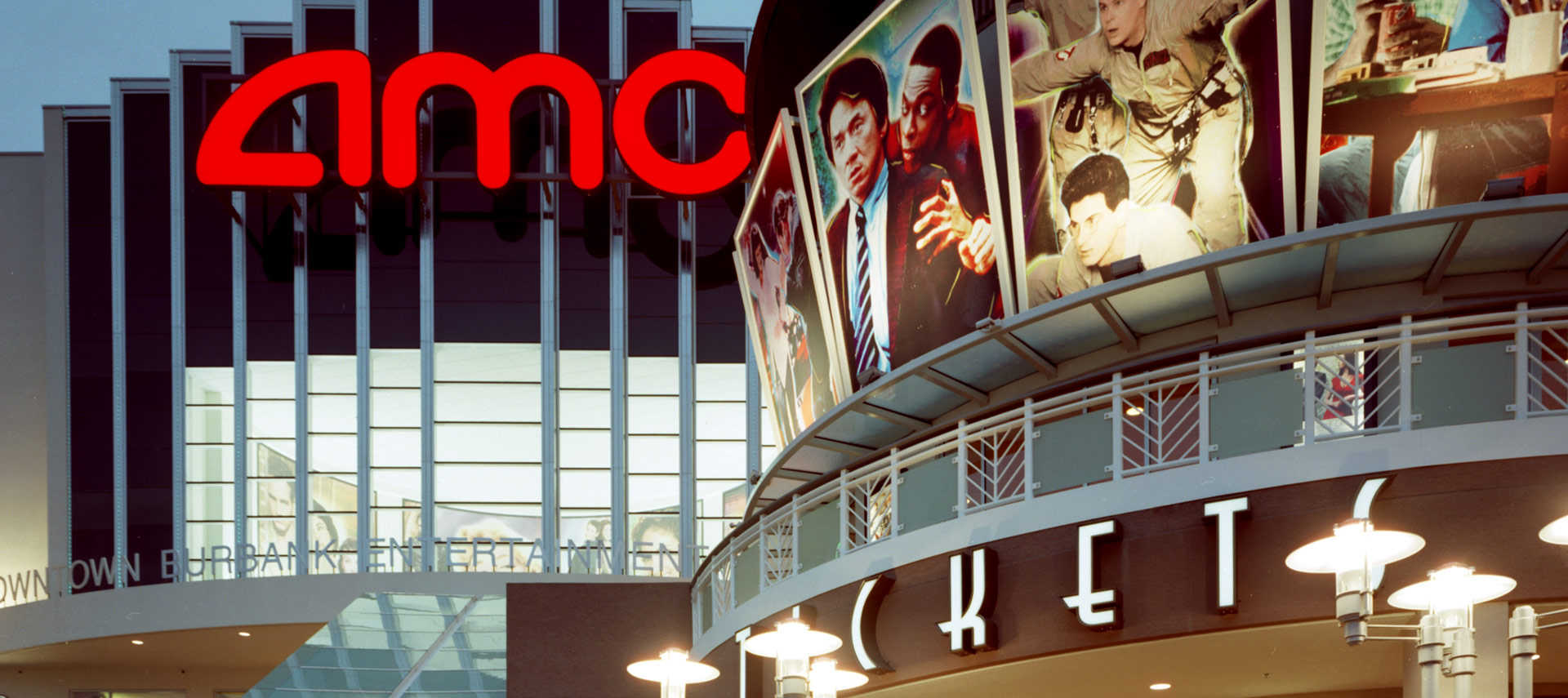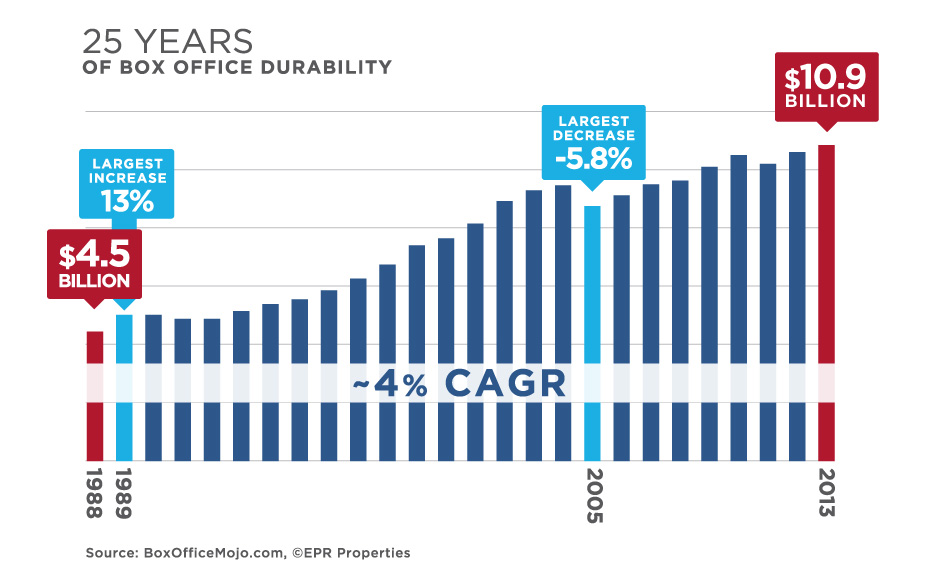The strength of the motion picture exhibition business runs counter to the headlines that the media often creates.
Key Insights
- Box office headlines can mask the economic viability of the historically durable motion picture exhibition industry
- The industry’s consistency is driven by the desire of the 12-39 year olds for a congregant entertainment experience
- Films that appeal outside the core demographic often help power this overall consistent industry
Box office revenues have increased each of the past two years, up 1% in 2013 and up more than 6% in 2012. Overall, revenue has grown 12% in the past six years. As the numbers reveal, the motion picture exhibition business is an industry whose strength runs counter to the headlines that the media often creates.
Sensational Headlines Cause Concern
A telling example comes from the summer of 2013. A masked pop culture hero attempted a jump from the TV screen to the silver screen. The Lone Ranger missed terribly, which left some industry experts questioning the long-term viability of the entire industry.
“Summer 2013 is unquestionably the season of the uber-flop,” proclaimed The Hollywood Reporter.
As a sign of how quickly the media is to pounce on the industry, the film’s failure led to proclamations that Johnny Depp’s career was in jeopardy as a result. These dramatic responses weren’t uncommon at the time. What was missing from the headlines was the fact that the actual data supporting the motion picture exhibition industry told a very different story.
A Picture of Durability
Occasionally, a few anticipated blockbusters will underperform and some critics of the film industry begin questioning the economic viability of everything associated with the “movie business.” In this instance, 2013 was not unlike other years. Despite a tough summer for The Lone Ranger, it was still one of the top five summers in the past 25 years. In fact, total summer receipts were up 12% from a year earlier.
In the past 25 years, box office revenue has increased, from $4.5 billion in 1988 to $10.9 billion in 2013. The compound annual growth rate has been approximately 4%.
Blockbusters have a positive impact on the industry. The summer of 2013 pulled audiences into theatres in droves, thanks largely to franchise films like Iron Man 3, Despicable Me 2, and Man of Steel. But contrary to the hype, they are not the sole measure of success. Rather, the industry is maintained by smaller, more consistent performing films that appeal to segments in the 12 – 39 age range which makes up 58% of the frequent moviegoing population. For this group, a night at the movie theatre is a social outing, the type of congregant experience that remains appealing regardless of movie reviews.
Additionally, there are movies which have more moderate expectations that provide a boon to the industry. In 2012, it was Academy Award Best Picture nominees Life of Pi and Lincoln which seemingly came from nowhere on the power of the 35-plus demographic. In 2013, The Butler filled the same role those films did, grossing $130 million. It was an indication of growing popularity of cinema for the 40-49 year old set, which ballooned from 3.3 million frequent moviegoers to 5.8 million from 2011 to 2012.
Sources
Box Office Report: ‘Lone Ranger’ Marks Third Big-Budget Bomb of Summer. The Hollywood Reporter.com. 2013. Web. 22 Dec. 2013.
Johnny Depp and ‘The Lone Ranger’ Flop: Is His Career Doomed?. The Daily Beast.com. 2013. Web. 28 Oct. 2013.
Disney Predicts It Will Lose Between $160-$190 Million On ‘The Lone Ranger’ Bomb. Business Insider.com. 2013. Web. 22 Dec. 2013.
Holy 6.5% Yield, Batman!. Barron’s.com. 2013. Web. 30 Oct. 2013.
Yearly Box Office Report. Box Office Mojo.com. 2013. Web. 30 Oct. 2013.
Why Spielberg and Lucas Are Wrong About The Film Industry ‘Implosion’. Forbes Magazine.com. 2013. Web. 30 Oct. 2013.







